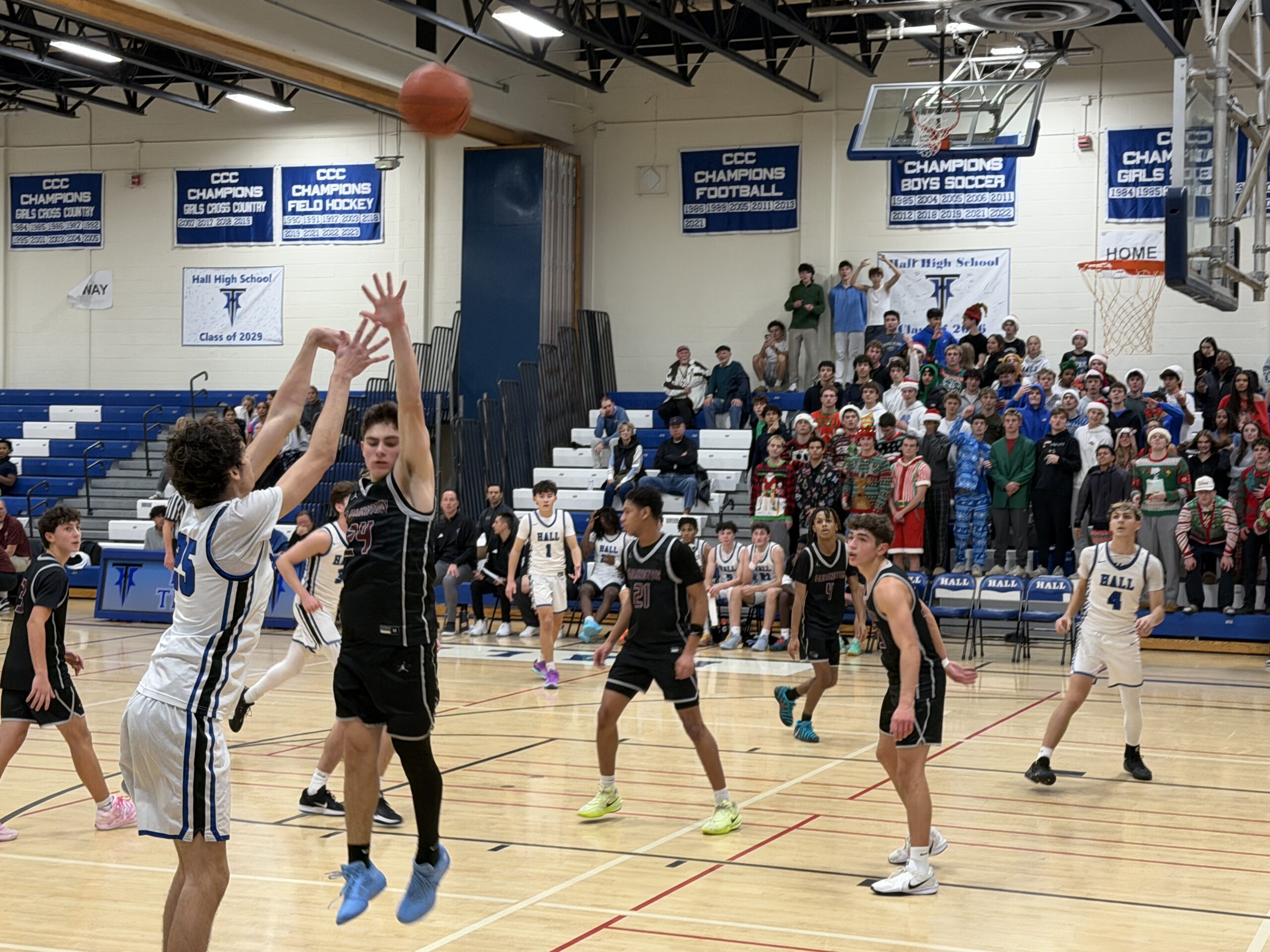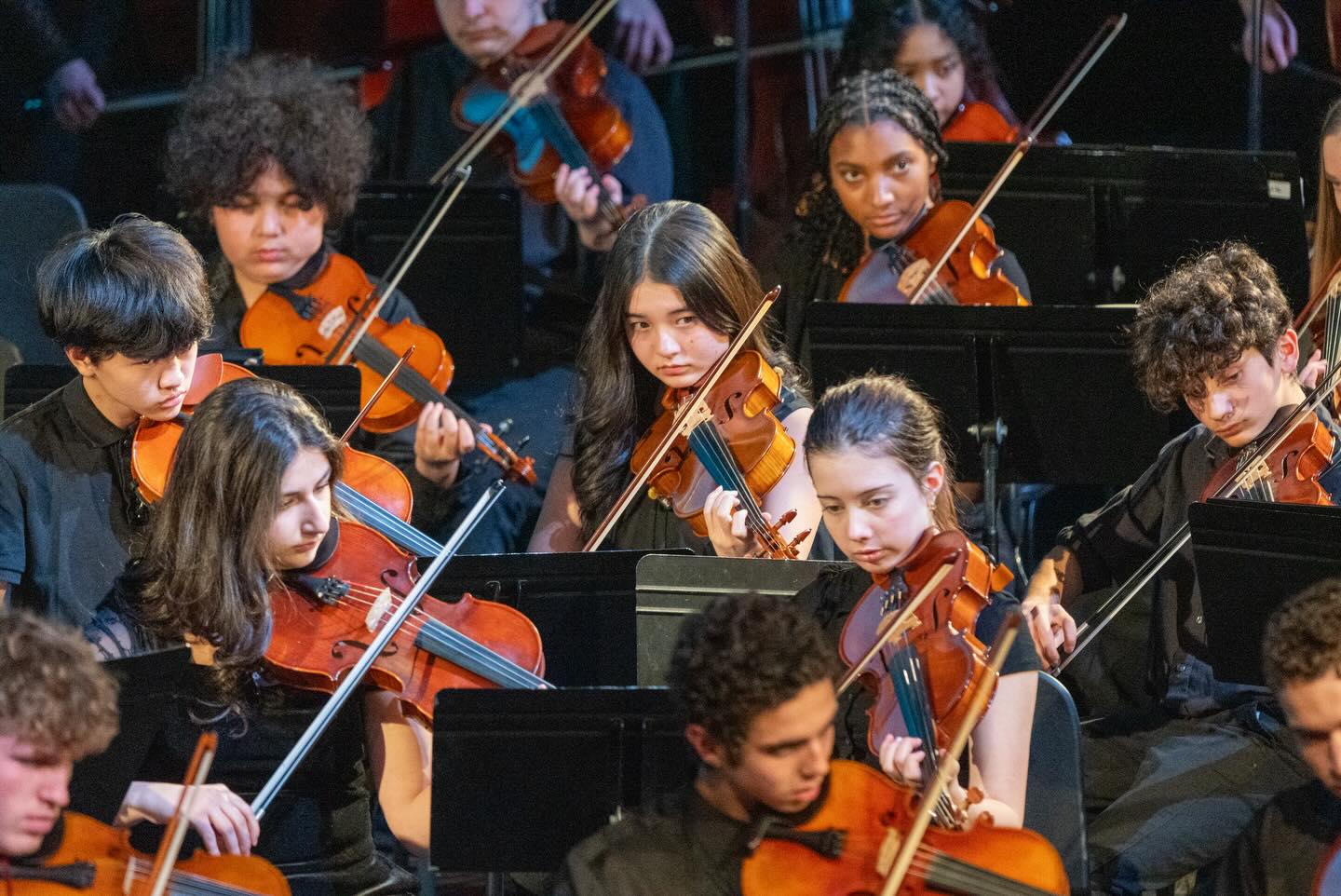West Hartford Flag Display Moves Beyond Striped and Starred Threads

Audio By Carbonatix
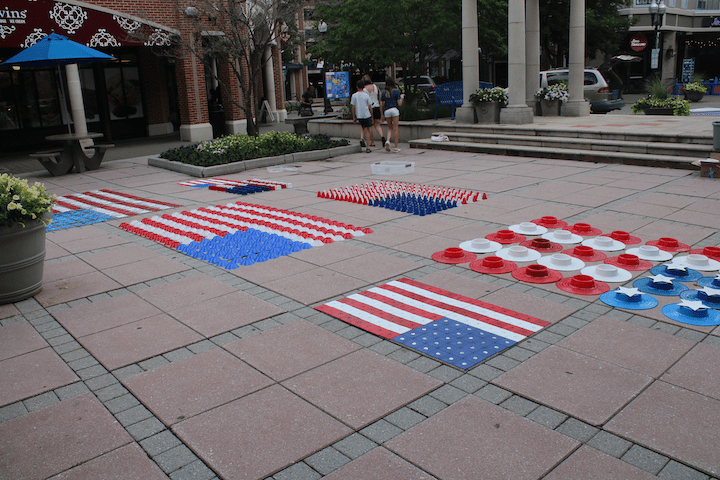
Bob Carley’s 6 Flags in Blue Back Square’s courtyard. Photo credit: Maeve Dowd
In advance of the Fourth of July, a Connecticut artist created a unique flag installation in West Hartford’s Blue Back Square.
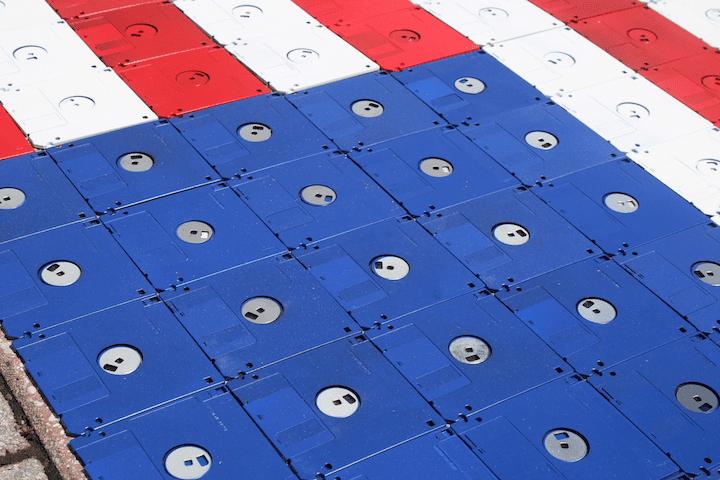
Painted computer floppy disks are used to create an image of the American flag. Photo credit: Maeve Dowd
By Maeve Dowd
For Connecticut artist Robert Carley, liberty is not just a core American value. For him, artistic liberty allows him to deviate from conventional American flags.
Carley uses seemingly mundane artifacts, ranging from paper clips to car tires, and designs them in an intricate pattern to recreate the American flag. In the years following 9/11, Carley traveled across the United States to document American patriotism and eclectic flag art. He has showcased his work in multiple museums and other venues including the Connecticut State Capitol.
This week, he shared his combined love for the U.S. and contemporary art in West Hartford to celebrate July 4th.
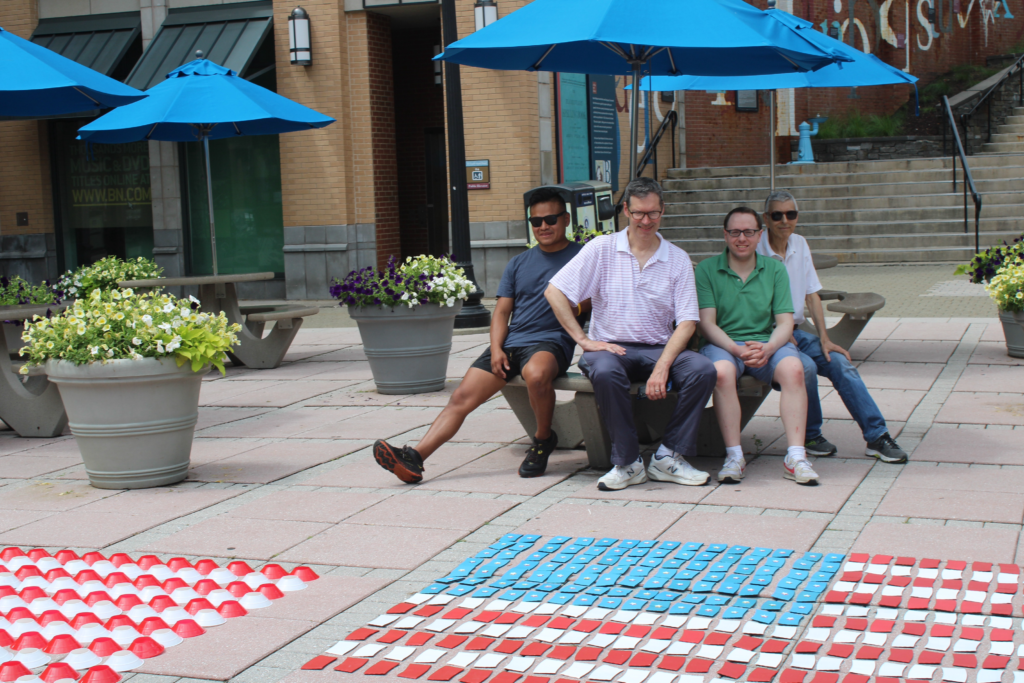
Bob Carley and friends (left to right): Silas Stygar, Bob Carley, Daniel Katz, Charlot Ras-Allard. Photo credit: Maeve Dowd
Carley said his friends are also invested in his art and help him prepare for and set up displays. On July 3, Charlot Ras-Allard, Silas Stygar, and Daniel Katz helped him set up six different flags in Blueback Square’s courtyard. The flags were made from old computer floppy disks, plastic yogurt cups, Starbucks coffee sleeves, cones, dog bowls, and Handi-Shims from the hardware store.
Born in New Orleans during a period fraught with outright racism but witnessing an era of vast improvement formed the way Carley said he sees the American flag binding citizens together despite differences. As someone who has a double degree in fine arts and political science from University of Pennsylvania, Carley said he also appreciates the beautiful design on the flag. “It lends itself to a lot of creativity. Because of its beautiful design, it can be rearranged in many ways,” Carley noted.
When making a flag, Carley collects materials, plans a design, paints the materials accordingly, and then positions the materials with precision. With displays similar to the one in Blue Back, Carley showcases his work for the day and then stores the materials at home.
He exhibits his work on other national holidays, such as Memorial Day and Veteran’s Day.
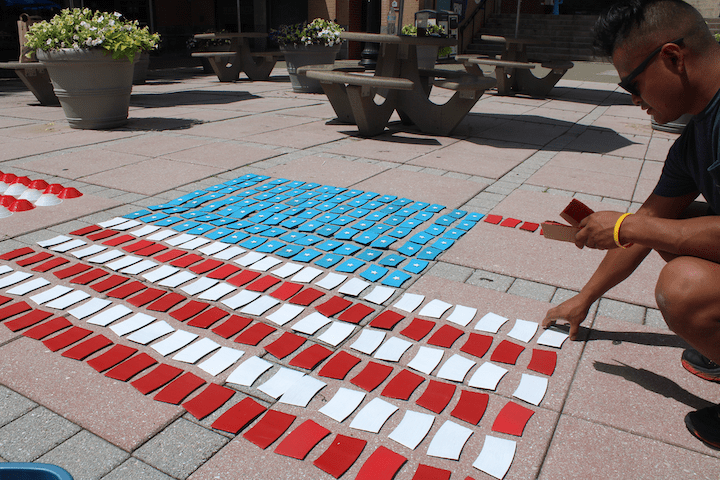
Silas Stygar helps set up coffee sleeves that he gave to Carley as a Starbucks barista. Photo credit: Maeve Dowd
Previous flags have been composed of materials including espresso shot cups, wine corks, and paper photo frame corners. He showcases photographs of his work in museums including the Connecticut State Capitol, the Bruce Museum, the Mattatuck Museum, and the Ely Center of Contemporary Art.
Carley noted, “Every year I say it will be my last year making flag art, but when art calls, you have to follow its mission.”
Carley’s curiosity in flag art started following the tragedy of 9/11, when he noticed widespread resilience and support and saw it in the form of American flags. “It was a time when the U.S. was most unified,” he said. “People put aside political differences and supported each other in the shared grief.”
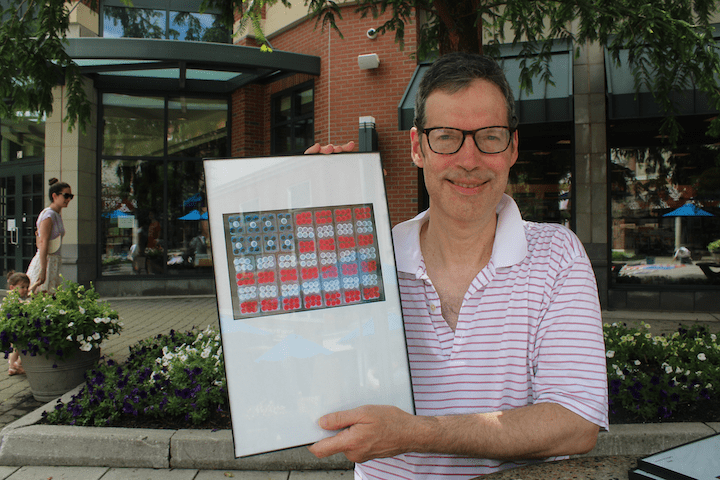
Robert Carley with a framed photograph of one of his flags. Photo credit: Maeve Dowd
Carley noticed that these flags took all different forms. This sparked an idea to embark on a journey across the U.S. to photograph American creativity and patriotism.
Some of his findings surprised him. Even in progressive regions of the country, Americans still painted houses, vehicles, planes, fences, boulders, and trees with the stars and stripes to show their ardent patriotism.
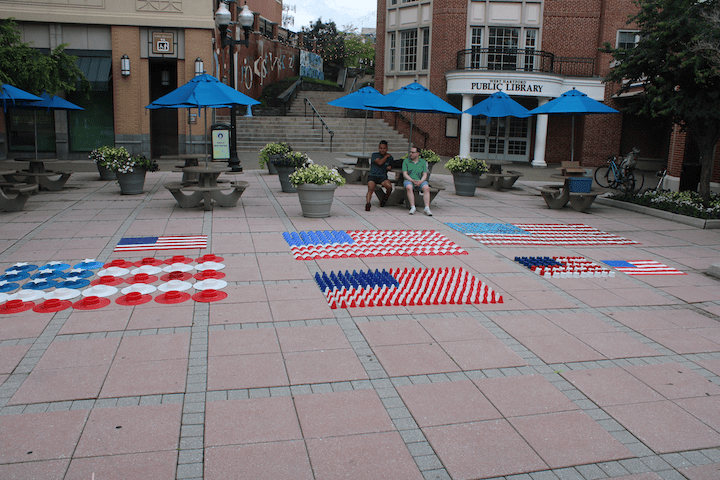
Bob Carley’s 6 Flags in Blue Back Square’s courtyard. Photo credit: Maeve Dowd
Capturing these moments on camera has been one of many aspects of his road trips for the past 20 years. But forging connections with the creators of flag art has also profoundly impacted him. “I love learning about these artists’ stories and inspiration.”
Much of the art he encountered came up through serendipity. He planned out stops, but word-of-mouth emerged as the primary way to find niche flag art. When traveling, Carley asked local residents, police officers, firefighters, and servers at diners to seek out information about any flag art that they knew of. His friends were also on the lookout for unorthodox America flags.
In 2021, Carley published a book on his findings since 2002 titled Liberated: Freed From the Flagpole. The book gives detailed explanations of each photo and brings Americans’ stories to life.
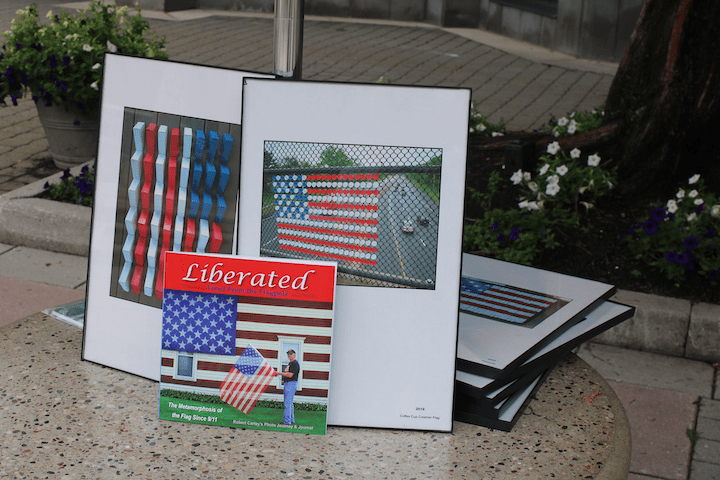
Some of Carley’s Photographs and his book “Liberated: Freed From the Flagpole.” Photo credit: Maeve Dowd
Carley intends to publish another book in the future, entitled Red, White, and New. This title encapsulates the double entendre that Carley hopes to represent in his art. Carley notes how “it is refreshing to see a different take on the American flag.” Furthermore, the physical evolution of the American flag reflects societal change within the U.S. In Carley’s words, it’s a “metamorphosis.”
A quote from Jesse Jackson in Carley’s book deeply resonates with him: “Our flag is red, white, and blue, but our nation is a rainbow – red, yellow, brown, black, and white – and we’re precious in God’s sight.”
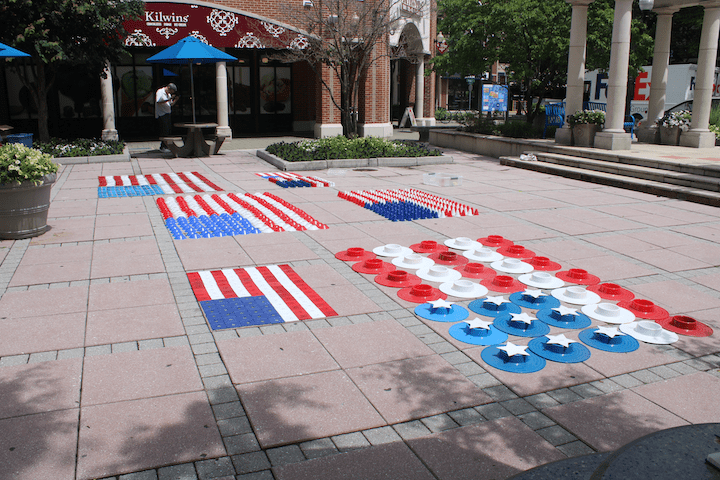
Carley’s 6 American Flags in Blue Back Square. Photo credit: Maeve Dowd
Like what you see here? Click here to subscribe to We-Ha’s newsletterso you’ll always be in the know about what’s happening in West Hartford! Click the blue button below to become a supporter of We-Ha.com and our efforts to continue producing quality journalism.


